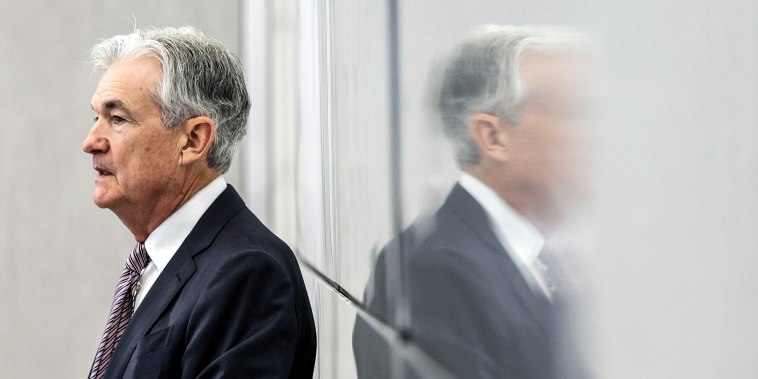The Federal Reserve is raising its key interest rate by 0.25%, continuing on its crusade against inflation while warning that recent instability in the banking sector could weigh on the economy.
In announcing their ninth consecutive rate hike — which increases the benchmark federal funds rate to a range of 4.75% to 5% — Fed officials said in a statement Wednesday that the “U.S. banking system is sound and resilient.”
But after a series of historic collapses and rescues of lenders in the U.S. and overseas, they warned that “recent developments are likely to result in tighter credit conditions for households and businesses and to weigh on economic activity, hiring, and inflation.” That means potentially higher borrowing costs for everything from home and car loans to steeper credit card interest rates.
“The extent of these effects is uncertain,” the statement continued, sounding a note of caution over the likelihood of further rate hikes as the Fed looks to get inflation back down to its 2% target.
After jumping immediately after the decision, markets took a sharp nosedive. The Dow Jones Industrial Average closed more than 500 points lower, or about 1.6% down. The S&P 500 and NASDAQ indices also finished the day down about 1.6% apiece.
In a press conference following the announcement, Powell addressed lingering concerns around the banking sector, reassuring U.S. depositors that their funds remain safe and that the Fed continues to use all its available tools to head off more problems.
“These are not weaknesses that are at all broadly through the banking system,” Powell said in response to a question, calling circumstances around the failed Silicon Valley Bank “an outlier.”
Powell’s reassurances coincide with efforts by Treasury Secretary Janet Yellen to soothe depositors and investors rattled by the fallout. Yellen told lawmakers Wednesday that regulators would take any necessary measures to “ensure that depositors’ savings remain safe” in U.S. banks.
However, she has said that while officials could backstop more deposits to avoid a broader contagion — as they did twice recently — the federal $250,000 insurance limit remains in effect. And on Wednesday Yellen emphasized that regulators are not considering offering “blanket insurance.”
The Fed also released its quarterly round of economic projections Wednesday, which include policymakers’ forecasts on inflation and rate hikes through 2025. It now foresees inflation remaining at a higher level for 2023 than it previously expected, while the unemployment rate for the year is now forecast to rise to 4.6% from 3.6% as of last month, higher than the prior expectation of 4.4%.
The latest 12-month inflation data came in at 6% for February. That was slightly lower than January’s 6.4% level — and down from a 9% peak last summer as price pain lingers for consumers despite gradual declines.
A more detailed inflation measure the Fed has been watching, so-called supercore inflation — which reflects price increases driven by everyday services costs like haircuts or meals out — even increased slightly last month, which led many analysts over the past week to anticipate further rate hikes.
As Bankrate Chief Financial Analyst Greg McBride put it in a statement Wednesday, “Not even the second and third largest bank failures in U.S. history, or the resulting instability in U.S. and global banking, can keep the Fed from a ninth consecutive interest rate hike to corral inflation.”
That wasn’t a sure thing, though, and analysts’ expectations were unusually divided in the run-up to the decision. Some had anticipated a heftier half-point rate hike and others no increase at all. In the end, the Fed took a middle-ground approach.
One reason some Fed watchers had expected a pause: The central bank’s own actions to curb inflation have been seen as factors in the recent collapses. While the failed lenders had distinct problems, higher interest rates have ratcheted up pressure across the financial industry.
By raising its benchmark rate, the Fed sets off a chain reaction of rate increases in other parts of the economy, making it more expensive to borrow and invest and thus cooling demand for goods and services.
That is precisely the central bank’s desired outcome in its fight against inflation. After its nine consecutive increases, consumers now face higher borrowing costs in a range of places, from credit card interest rates of nearly 20% to auto loan rates of about 6.5%.



























